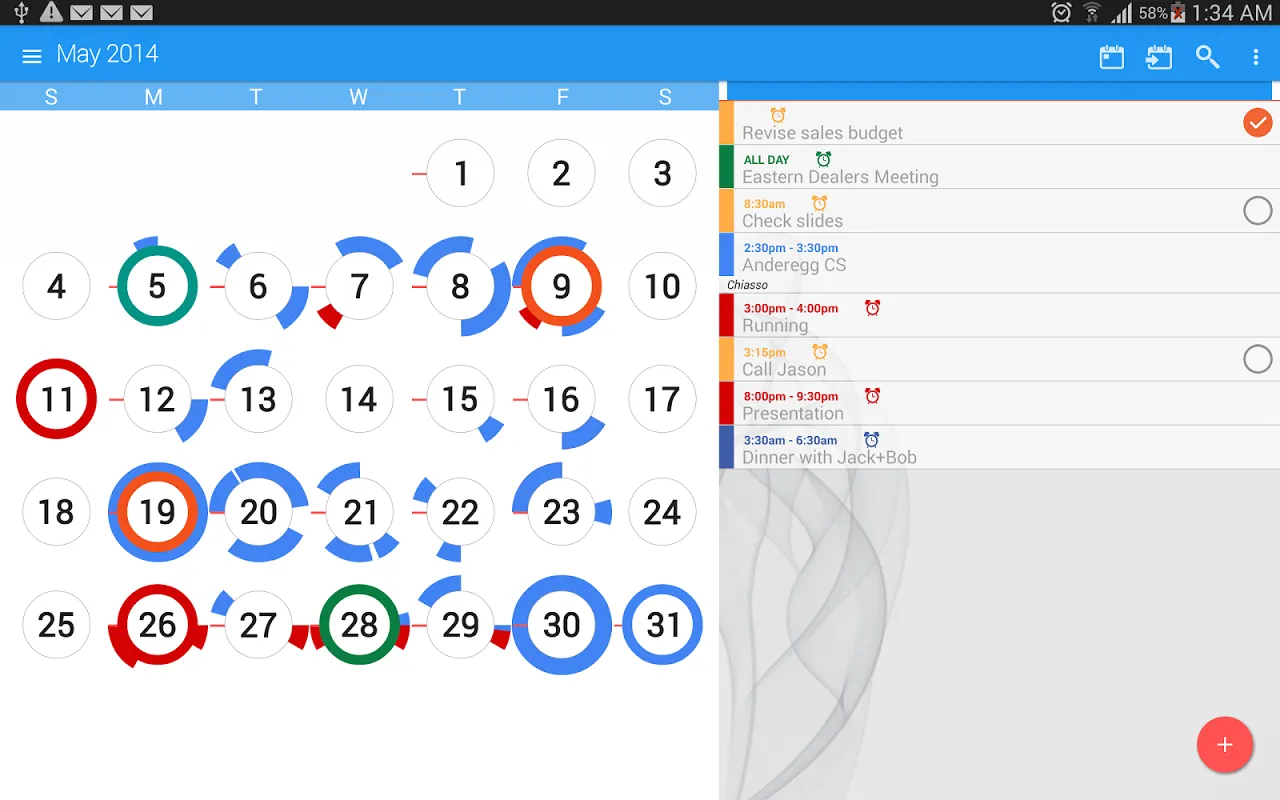
Max Miller
December 3, 2025
Competent personnel policy is a priority in the development of any company. It affects the productivity and efficiency of employees. When choosing ways of influencing subordinates, HR services are oriented on general and specific principles of personnel management.
Improve Your Personnel Management System

The Essence of Human Resource Management
Human resource management is the organised and continuous influence on employees. Influence on them with the help of various tools and methods, corresponding to the strategy and policy of the company. The management system includes tactical and strategic part, external and internal environment.
Tactical human resource management is focused on the following tasks:
- Recruitment, training, retraining, and education of employees;
- career progression and dismissal;
- individualised staff performance appraisal;
- analysing, planning the number of employees.
The strategic subsystem of personnel management deals with:
- development, analysis of the company’s personnel structure;
- by creating a human resources policy for the enterprise;
- monitoring the efficiency of employee time utilisation.
The external environment of the personnel management system includes departments of production management, sales, supply, and finance of the company. The internal part is the personnel management mechanism itself, which fulfils the functions:
- recruitment of personnel and organisation of labour relations in the team;
- development, professional development of employees, organisation of favourable working conditions at workplaces;
- staff motivation;
- information, legal management based planning, human resources marketing.
The productivity of employees largely depends on the actions of the human resources department. Personnel are the most difficult resource to manage. Collectives consisting of individual personalities react differently to the impact of management. It is difficult to predict the reaction of each employee to a particular management decision.
Modern management concepts recognise the importance of each employee’s personality. They are oriented not only on profit, but also on the satisfaction of social and material needs of subordinates. They are guided by general and private principles of personnel management, consisting of rules that require mandatory fulfilment.

Principles of personnel management
The basic principles of personnel management are universal. They are applicable in any company. They are mandatory for implementation. They include:
- Management focus. It implies a clear setting of goals within the organisation and its structural units. The main goal is determined on the basis of the company’s mission. Related goals should be complex, but achievable, have a correct formulation. This will help to mobilise the efforts of the personnel to achieve them, make their work transparent and understandable. The goals should correspond to the resources available to the company. At the same time, it is important to identify and eliminate at an early stage the weak link that may hinder the realisation of the set goals.
- Systemic. According to this principle, any company is a single system, uniting all employees interacting with each other and the environment.
- Division of labour. It is based on the division of management levels, specialisation of workers. Each level solves its own tasks. At production enterprises, foremen do not fulfil the tasks of the director, and the director does not concern himself with issues within the competence of foremen. Each employee performs work in accordance with his or her functional responsibilities.
- Equal opportunities for all participants in the work process. This principle should be adhered to, starting with the selection of personnel. People are not divided by gender, age, nationality, appearance or other qualities. Only their professional qualities and their ability to adapt to the team matter.
- Responsibility. It is based on the introduction of a system of rewards and punishments for unfulfilled tasks. Penalties are chosen according to the level of the employee’s authority. The higher the position - the more responsibility. The manager should not just give assignments to subordinates, but have the authority to do so.
- Competence. The manager should be well versed in the field of activity of the company he/she manages. This principle works in conjunction with horizontal co-operation associated with the delegation of authority to lower level managers.
- Discipline. The most important principle of personnel management that should be present in any company. It is the strict fulfilment of job duties, management orders or requirements of policy documentation. Strict discipline in the work team has a positive impact on the culture of personnel management. At the same time, control over compliance with job duties should not prevent employees from realising their creative potential.
- Motivation. Motivation of employees by means of material, moral resources. The employee should be economically interested in labour results, receive psychological and emotional satisfaction from his activity. This can be achieved by competently using the levers of influence on the staff. One of the indispensable elements of the incentive principle is also fair treatment of employees.
- Hierarchically. It represents a vertical division of labour, in which the lower links are subordinate to the higher ones. This principle is used when building the management structure of an organisation.
- Subordination to common interests. Each member of the work team contributes to the development of the company. As a result, the company’s profitability increases, and employees receive the promised remuneration and other material and spiritual benefits.
All the above rules are related to each other. It is possible to achieve effective functioning of the personnel management system only when they are used together.

Private management principles
Modern personnel management is centred on the private principles of personnel management. These include:
- Attention to people, their initiative and needs.
- Delegating responsibilities to employees, joint decision-making, involvement in the social life of the team.
- Абсолютное доверие между руководством и работниками.
- Team building, creation of a unified team in which each participant takes responsibility for the results of his/her labour.
- Improving methods of rewarding and incentivising employees.
The selection of specialists for the company is based on the individual abilities, education, and personal characteristics of the applicants. The selection of candidates also takes into account their professional skills and experience. Invited employees should have the necessary skills and abilities to fulfil the general tasks of the company and be able to work in a team.
At the same time, the interests of management and employees must not contradict each other. For this purpose, regular monitoring is carried out to determine how satisfied employees are with their jobs and working conditions, and what they think about the company’s further development.
Methods and tools for personnel management
It is worth distinguishing between principles and methods of personnel management. The former require constant and strict application. They are norms, rules that should be observed when forming and managing a company’s HR system. Methods are a more flexible category, representing a set of tools that help to achieve the set goals.
They differ:
- in terms of content;
- method of exposure;
- directionality of influence;
- have an organisational form.
Based on the nature of impact, personnel management methods are:
- Organisational and administrative. They are based on maintaining discipline in the company, instilling in employees a sense of duty and responsibility for their work. All regulations issued by the company’s management are enforced on a mandatory basis.
- Economic. Based on financial incentives or sanctions against employees.
- Social and psychological. They imply moral influence on the company’s personnel, creation of a favourable environment within the team.
Let us consider the peculiarities of application of these tools and mechanisms in more detail.
Administrative
They have a direct impact. They are based on maintaining a sense of duty, responsibility among employees, compliance with discipline and working hours. They are divided into the following types:
- Organisational. These are the company’s staff schedule, statutes, labour regulations. This group also includes rules for organising workplaces, regulations, contracts with employees.
- Regulatory. They include orders for the enterprise, instructions, control over the execution of tasks. In case of non-execution of orders by the personnel, appropriate sanctions are applied.
- Material. If an employee has caused damage to the company, management has the right to claim the amount of the damage or deduct the amount from the bonus.
- Disciplinary. These include warnings and penalties, demotion or dismissal.
Due to the use of administrative methods of personnel management, the strict execution of management orders is ensured. They help to maintain strict discipline in the company, which has a positive impact on the efficiency and productivity of labour. On the basis of administrative methods, personnel incentive systems are developed.
Economic
These include instruments of material incentives for employees, as well as financial penalties imposed on personnel in case of failure to fulfil their assigned obligations. The choice of the appropriate method is based on the form of ownership of the enterprise, the remuneration system it has chosen, and the tax and credit system in which the company operates. The application of these methods makes it possible to achieve the following results:
- Prepare an economic development plan with long-term goals and service calculations.
- Get consistent, predictable results.
- Increase the payroll through the creation of additional employee benefits.
Economical` methods are applied taking into account their payback. That is, investing money in the material support of employees should bring profit as a result of increasing their efficiency and productivity.
Socio-psychological
It implies organisation of relations between employees and management, maintenance of a favourable atmosphere within the team. Psychological techniques are used to influence individual employees, while sociological techniques are used to influence the team. They help to determine the place of each employee in the team, to identify team leaders, to eliminate conflicts on industrial grounds. They include:
- Involvement of employees in management processes;
- support of social, ethical norms of company management;
- organising groups according to the interests, hobbies and positions of employees;
- satisfaction of the spiritual and moral needs of the staff;
- Maintaining a sense of self-worth and value among employees.
This group also includes social support for employees, including social packages, transport benefits, mobile phone payments and other bonuses from the company.
Psychological management methods are of a personalised nature. They are aimed at improving the working atmosphere in the company. They help to create optimal conditions for the development of employees. They include:
- Creating a favourable emotional environment in the team;
- Analysing staff motivation;
- Conflict Resolution;
- Professional development of employees, development of professional skills;
- Formation of corporate culture in the company.
These methods are implemented through surveys and questionnaires of employees, conducting social experiments at workplaces. One of the main advantages of applying social and psychological impact on employees: minimising conflicts at workplaces, improving their motivation and emotional state.These methods are implemented through surveys and questionnaires of employees, conducting social experiments at workplaces. One of the main advantages of applying social and psychological impact on employees: minimising conflicts at workplaces, improving their motivation and emotional state.

Modern strategies, approaches to HR management
In order to form a competitive, cohesive staff of the company, various HR management strategies are used, oriented towards the long term and compliance with the mission and philosophy of the company.
Modern personnel services at each stage of work with personnel apply various methods and technologies of management. The following organisational approaches are used in personnel selection:
- Aggressive headhunting. Luring promising employees from competing firms.
- HR-branding. Development of an attractive company image.
- Remote selection of employees. Working with specialists remotely.
- Search for job candidates on social media.
The following management techniques are used in the process of employee onboarding in the workplace:
- Conversations with immediate supervisor, department or team leader.
- Mentoring, helping newcomers from more experienced colleagues.
- Seminars, trainings for on-the-job training.
- Company overview tours.
To assess the performance, effectiveness of personnel use:
- certification;
- testing;
- Assessment Centres;
- peer reviews;
- business games.
Various in-house training methods are used to improve employees’ qualifications: trainings, online training, seminars, round tables, and courses.
Advantages of LeaderTask in HR management organisation

Automated personnel production systems are used to organise well-coordinated work in a team. One such application is the modern task manager LeaderTask, which allows you to manage the company’s personnel within one programm.
The functionality of LeaderTask organiser includes distribution of duties and tasks among employees, discussion, scheduling tasks, prioritising tasks by importance and urgency.
Using the LeaderTask scheduler, you can:
- Create errands for staff.
- Assign statuses to tasks and mark them complete.
- Work in collaborative projects.
- Provide shared access to tasks.
- Make comments, attach notes and any files to tasks in the system.
The application functions on all platforms, including offline mode, without the Internet. The programme includes the option of voice input, creating tasks from email or browser. The organiser contains any ready-made solutions for personnel management in companies of any scale and sphere of activity. To use planner no special skills or training is required. There is a free trial period and bonuses for purchasing the full version.
Conclusion
Modern HR management is oriented towards a strategic approach to personnel management. It is based on the recognition of the value of each employee as a decisive factor of the company’s competitiveness. It implies the application of economic management methods when confirming the feasibility of investment in human resources. It is based on social partnership, democratisation of management, enrichment of work and improvement of employees’ quality of life. It is aimed at continuous training of personnel, increasing their motivation to achieve better results.
What is personnel management?

Personnel management is the process of recruiting, organizing, developing, and supervising employees to ensure that an organization operates efficiently and meets its goals.
What are the main principles of personnel management?

Key principles include fairness, clear communication, transparency, motivation, proper delegation, continuous development, and alignment between employee goals and organizational objectives.
Why is personnel management important?

It improves productivity, reduces turnover, strengthens teamwork, supports employee development, and ensures that business processes run smoothly.
What methods are used in personnel management?

Common methods include administrative methods (rules, policies), economic methods (bonuses, incentives), and psychological methods (motivation, communication, leadership approaches).









